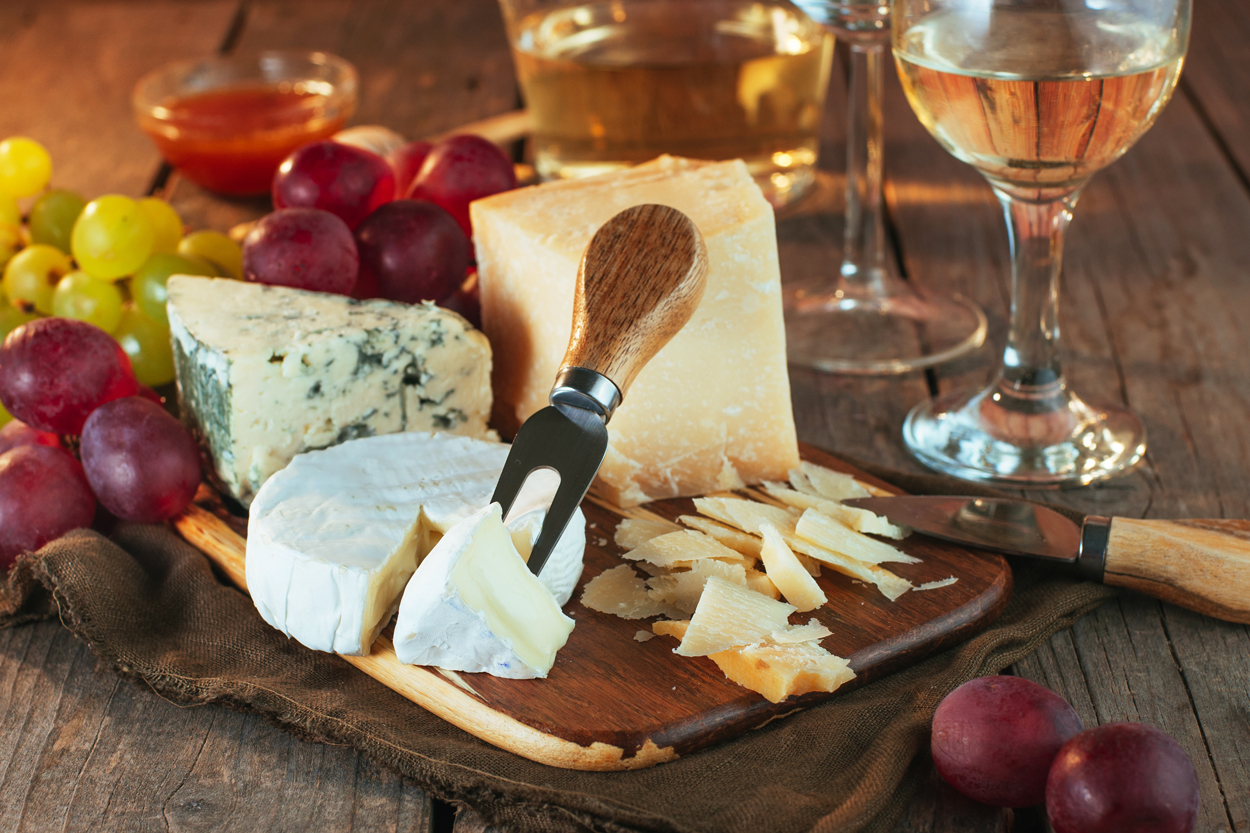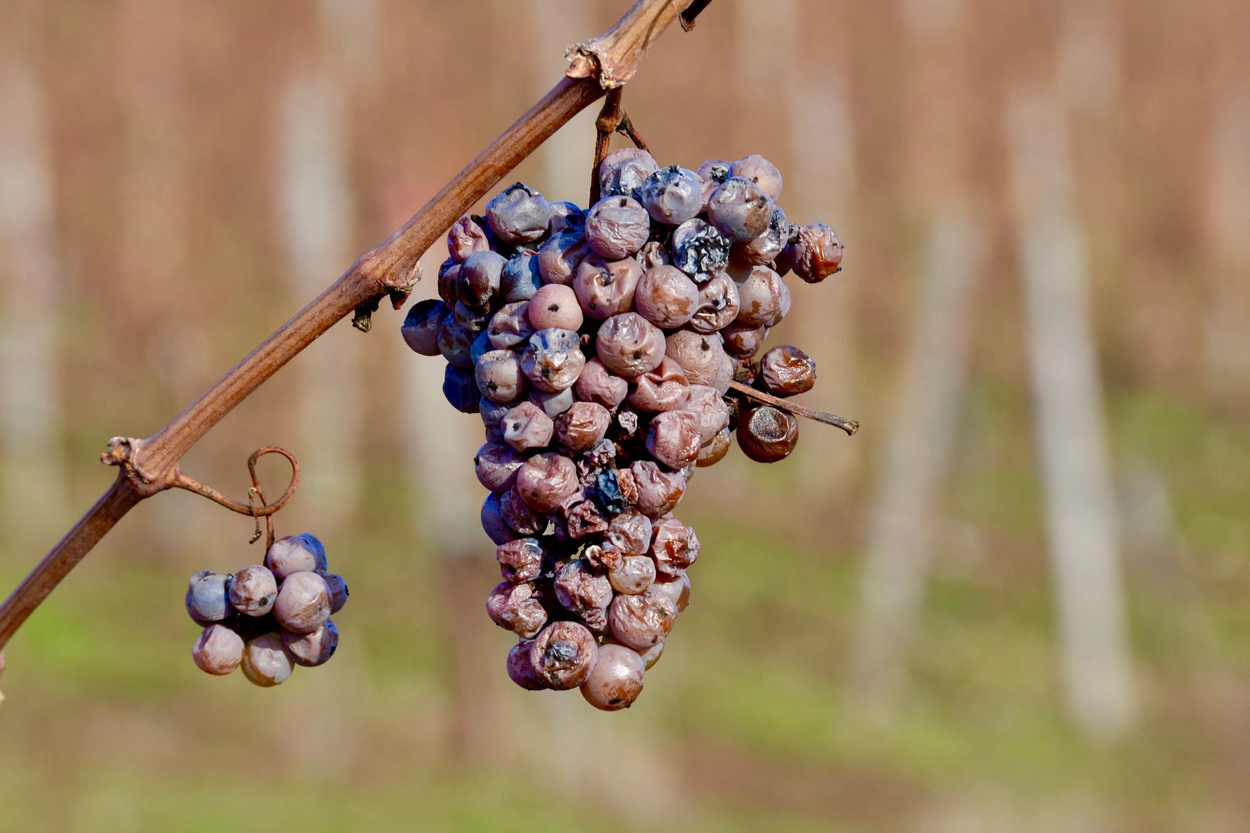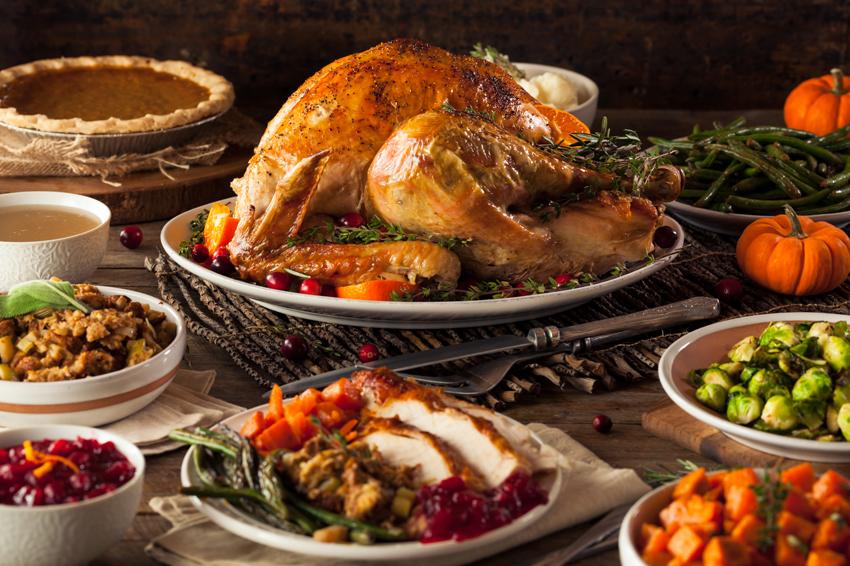Sweet wines are consumed throughout the year, however at Christmas time the demand goes into overdrive. A Christmas menu is not complete without an indulgent, sticky to end the meal. It is also a great idea to keep one in the fridge throughout the festive period, as you never know when you might need to whip it out. Once opened, they can be kept for a couple of weeks in the fridge and remain fresh. The sugar in the wine acts as a preservative so they do not deteriorate as quickly as a dry wine. Sweet wines are not just for pudding, they can be enjoyed as an aperitif or with a main course.
How are sweet wines made?
There are many styles of sweet wine with varying degrees of sweetness. Grapes contain natural sugar, (fructose and glucose), and when the grapes are made into wine, the yeast consumes the sugar and produces alcohol. If the yeast is allowed to consume all the sugar, the wine will be dry and the alcohol content increases. If the fermentation is interrupted by removing the yeast or the grapes have more sugar than the yeast can cope with, the resulting wine will be sweeter.
There are several methods of ensuring there is has residual sugar in the final wine, but we are going to focus on the high-quality, luscious sweet wines which are made from extra sweet grapes. The intense sweetness and complexity can only be achieved by concentrating the sugars inside the grape whilst boosting or preserving the acidity to ensure the wine is balanced. The best sweet wines have both high sugar and high acidity.
Styles of sweet wine
Late Harvest
A late harvest wine’s sweetness is achieved by allowing the grapes extended ripening time on the vine. The longer a grape remains on the vine, the sweeter they become as each individual grape dehydrates and the sugar content becomes more concentrated. The labelling terms Spätlese (Germany) and Vendage Tardive (France) literally mean ‘late harvest’ which will be an indication of the sweetness in the wine.


Disznoko Tokaji Late Harvest, 2019
The vineyards are located within the World Heritage site of Tokajj, the region famed for its sweet wines. Yellow-gold in colour. Intensely fruity nose with apricot, nectarine and citrus fruit aromas. The palate is rich with crisp acidity and fresh fruit flavours. Great with nibbles like prosciutto, olives, sun-dried tomato, pâté on toast or goats cheese. Also a great pairing with light fruit-based desserts like lemon meringue.


Quinta Da Alorna, Branco Colheita Tardia, 2017
A true forerunner when it comes to native varietals, crafting exciting wines made from grapes such Arinto and Tinta Roriz, as well as well Fernão Pires to make this delicious, late-harvest, sweet wine. A deep golden yellow colour with aromas of ripe tropical fruits and notes of flowers, honey and almond giving complexity. Deliciously sweet and intense with a good balance of the natural acidity that makes the finish long and pleasant. Rich enough to pair with foie gras and sublime with sherry trifle.
Noble Rot
Noble rot, aka Botrytis Cinerea, is a remarkable, natural phenomenon without which many of the world’s greatest sweet wines could not be produced. It is a fungus which only occurs in certain conditions and perforates the skins of healthy grapes allowing the moisture to evaporate, therefore dehydrating the grape and concentrating the sugars, acidity and flavour. The result is an unctuous and complex sweet wine, capable of long ageing, that has aromas and flavours of apricot, mango, ginger, honey, beeswax, hazelnut, almond, flowers, peaches and marmalade. The intense sweetness is perfectly in harmony with the high acidity. The most famous versions being Sauternes and Tokaji Aszu.
The grapes are all hand harvested and often require several passes through the vineyard to pick, as not every bunch will be affected in the same way. Resultant yields are extremely low and labour and production costs are high, which is why these wines often carry a premium, however they are truly some of the finest and rarest wines produced in the world.
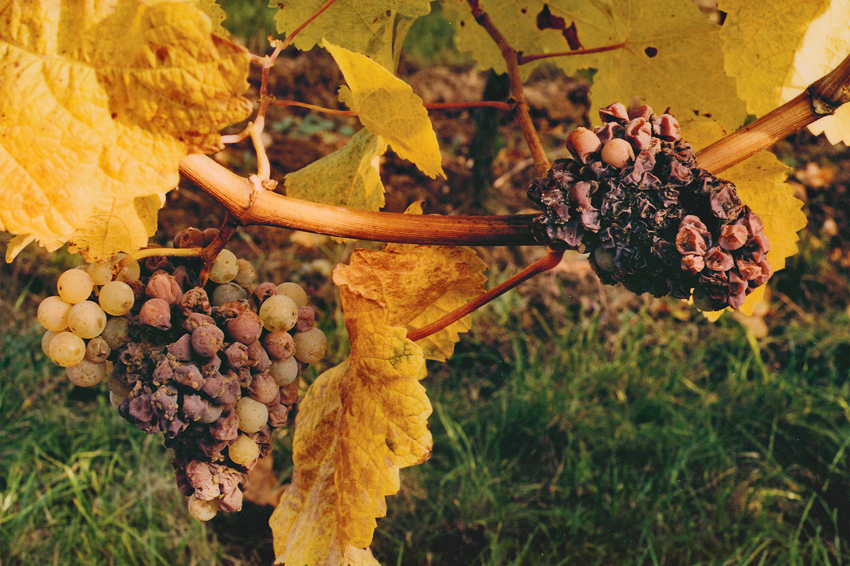



Chateau Petit Vedrines, Sauternes 2016
Available in half bottles and full-size bottles. Always one of the strongest second wines from the top chateaux in Sauternes. Richly flavoured with honey and lush stone fruit, fresh acidity and great length. Enticing aromas of lemon curd, peach honey and orange marmalade fill the glass. The luscious and generous mouthfeel is complimented by bright, vibrant acidity and a concentrated core of added citrus and white stone fruit as well as a delicate touch of ginger spice. Extremely moreish! The Bordelais say the perfect match is Fois Gras or roast chicken basted in Sauternes, a speciality of the region. For a more modest pairing we suggest duck liver pate, game terrine, goats cheese, blue veined cheese or an apple tarte tatin.
For Tokaji Aszu recommendations, check out our dedicated blog here.
Dried grapes
Almost every winemaking country in the world has their own version of sweet wine made from dried grapes, with a similar idea behind the process; dehydrating the grapes in order to concentrate everything else, including sugars. Removing the moisture will result in raisoned grapes that taste intensely sweet. The country with the longest history of making wines in this method is Italy, where they use the word ‘passito’ meaning sweet to describe the wines that have been made from dried grapes using the appassimento method.


Cantina di Negrar Recioto della Valpolicella DOCG, 2017
Complex and beguiling aromas of creme de cassis, prune, black cherry and black plum with a deft floral lift. Intense and full bodied on the palate yet balanced by uplifting acidity and generous sweetness. Bright and vibrant with further dark black fruit and a touch of raisin on the persistent finish. A lovely match for a rich chocolate cake or a cheese board.


Felsina Beradenga Vin Santo 2013
Produced from Malvasia, Sangiovese and Trebbiano grapes which were rigorously selected and subjected to a natural drying process on mats until January/February of the following year. They are then de-stemmed and pressed. The must is transferred to sealed 100 litre oak casks containing the 'mother', the gelatinous remainder of previous vintages. After seven years in the 'vinsantaia' loft area, the wine is bottle-aged for six months prior to release. Golden yellow with coppery highlights. Peach, apricot, pineapple and tropical dried fruit aromas. The palate is soft, elegant and well-structured with nuances of hazelnut and caramel complemented with well-integrated oak. The sweetness and acidity are perfectly in balance with a lovely, long finish. Traditionally served as a welcome wine with Italian biscotti or Panettone with raisons and candied fruits.
Icewine
Authentic Icewine (or Eiswein) is extremely tricky and expensive to create. Grapes are frozen while still on the vine - freezing the water in the grapes but not the sugars, allowing tiny quantities of highly sweetened grape juice to be extracted. The resulting wine is typically sweet, with a burst of dense, rich flavour and a clean line of fresh acidity.
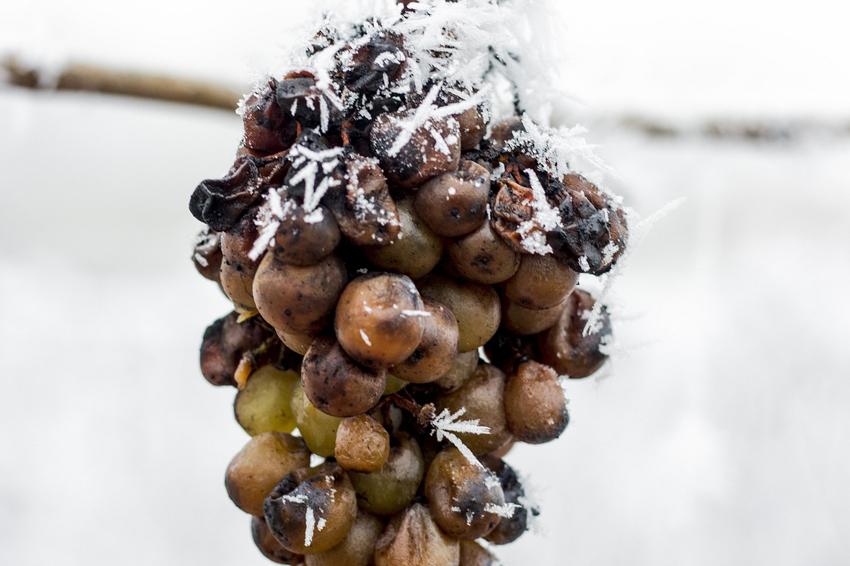

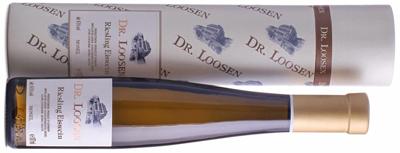

Dr Loosen Riesling Eiswein, NV
Pure with mega concentration. Vibrant and densely packed with pear, apple and guava. Luscious and silky with a bright, crisp, dynamic finish. A decadent match for a rich, tart lemon cheesecake.
There is also a plethora of fortified sweet wines which I will tell you all about in my next blog! If you need further information on sweet wines, please contact the team on 01325 776446, or at wine@bcfw.co.uk.
SHOP ALL SWEET WINES

